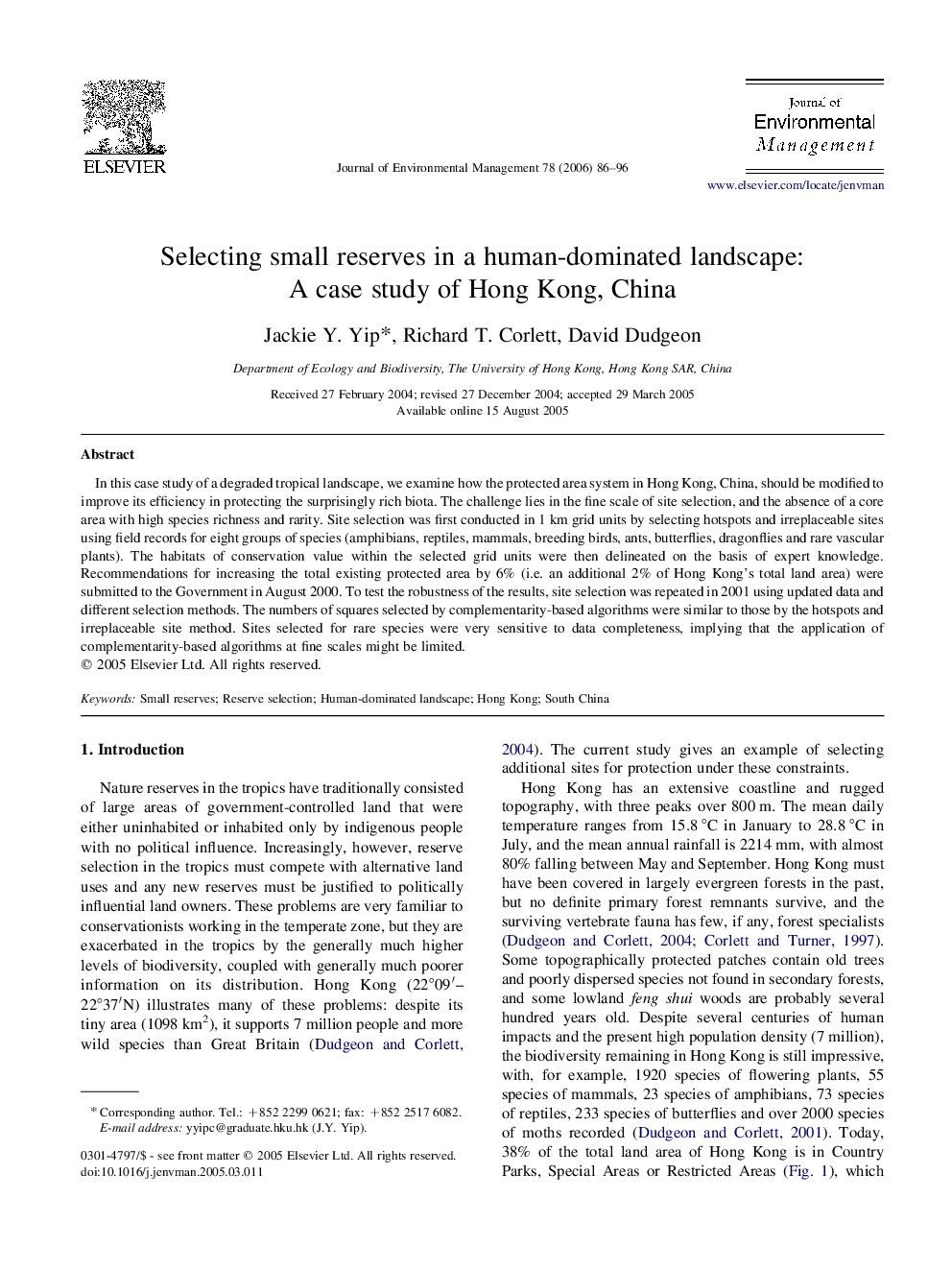| Article ID | Journal | Published Year | Pages | File Type |
|---|---|---|---|---|
| 1058925 | Journal of Environmental Management | 2006 | 11 Pages |
In this case study of a degraded tropical landscape, we examine how the protected area system in Hong Kong, China, should be modified to improve its efficiency in protecting the surprisingly rich biota. The challenge lies in the fine scale of site selection, and the absence of a core area with high species richness and rarity. Site selection was first conducted in 1 km grid units by selecting hotspots and irreplaceable sites using field records for eight groups of species (amphibians, reptiles, mammals, breeding birds, ants, butterflies, dragonflies and rare vascular plants). The habitats of conservation value within the selected grid units were then delineated on the basis of expert knowledge. Recommendations for increasing the total existing protected area by 6% (i.e. an additional 2% of Hong Kong's total land area) were submitted to the Government in August 2000. To test the robustness of the results, site selection was repeated in 2001 using updated data and different selection methods. The numbers of squares selected by complementarity-based algorithms were similar to those by the hotspots and irreplaceable site method. Sites selected for rare species were very sensitive to data completeness, implying that the application of complementarity-based algorithms at fine scales might be limited.
